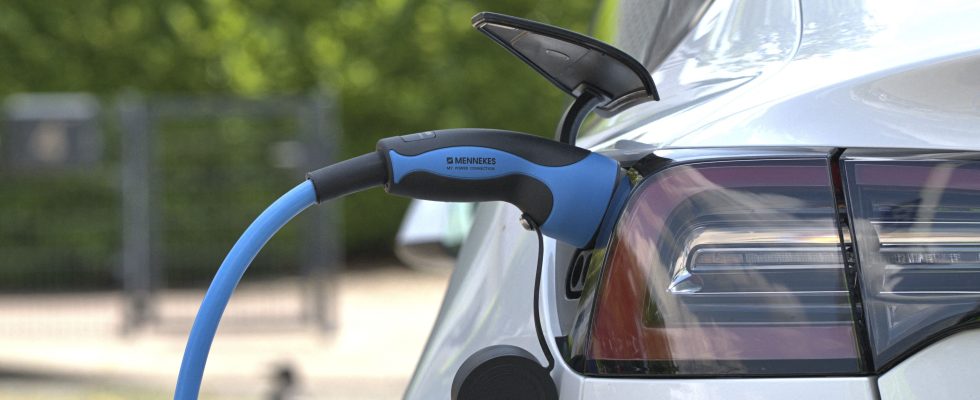No one wants to miss the LFP battery train. In recent months, car manufacturers have multiplied announcements promising to equip some of their models with lithium-iron-phosphate (LFP) batteries, which consume less critical raw materials and are therefore less expensive. Tesla, as often, has paved the way: the manufacturer, owned by billionaire Elon Musk, already uses it for its Model 3 and Y, entry-level vehicles; Chinese BYD too. Volkswagen wants to follow, just like Ford, for its Mustang Mach-E: the group will even pay 3.5 billion dollars for building a factory LFP battery manufacturing facility in Michigan. The Franco-Italian-American manufacturer Stellantis also plans to take the plunge. Its executive director, Carlos Tavares, agreed last February that he “needed” this type of battery to “be competitive in the mid-range segment and produce affordable models”.
Appetites are therefore whetted when it comes to offering less expensive electric vehicles. But the battery, with its components, is the sinews of war. LFP batteries, compared to nickel-manganese-cobalt (NMC), which currently dominate the market, have serious advantages. Economic, in particular. “If there is lithium in all batteries, iron and phosphate do not cost much compared to nickel and cobalt”, explains Christophe Pillot, director of the Avicenne Energy firm.
The evolution of the cost of these critical raw materials is a strong argument advanced by the specialist, while “the components account for 70% of the price of the battery, and that the cathode [NDLR : un élément clef de la batterie, composé dans ces cas de lithium-fer-phosphate ou de nickel-manganèse-cobalt]for 50% of it”. Result: “the cost per kilogram of a positive electrode material of the NMC type is between 20 and 50 dollars, against 10 to 20 dollars for the LFP”, estimates Sébastien Patoux, head of the CEA’s battery department.
Lower energy density
This battery is also considered safer and has a better lifespan. One downside, however: it has a lower energy density. “So we do fewer kilometers”, sums up Sébastien Patoux. This is why European manufacturers initially favored the NMC model, with its higher autonomy, in the race for performance. The engineer agrees, the strong comeback of LFP batteries is a “relative surprise, although it is explained by the current diversity of the electric vehicle offer (no longer only premium). , the market outlook for LFP was weak outside of China. Now it is estimated that it could account for up to 50% of total batteries.”
The technology, however, is not new: it appeared at the end of the 1990s, but its commercial development has long been blocked in Europe and North America, due to lack of interest from manufacturers, who have preferred to position themselves on high-margin vehicles, offering customers the promise of maintaining a high level of autonomy even when going electric. Meanwhile, China is fully committed to it with a lot of subsidies.
Unsurprisingly, the country controls, not to say monopolizes, the supply chain and the production of these crucial units for the energy transition. In 2022, “about 95% of LFP batteries for light electric vehicles were used in vehicles produced in China, BYD alone accounts for 50% of demand, and Tesla 15%”, notes the International Energy Agency (IEA) in its latest report on the subject. And when Tesla cars equipped with LFP batteries do not come from China – around 85% of cases – they are made in the United States… with cells imported from China. Even more eloquent: the latter holds 99% of the world market for LFP cathodes, according to Mineral Intelligence Benchmarkan agency specializing in energy transition metals.
Ideal for small urban electrics
“Despite everything, it is possible to put back in place channels”, wants to believe the engineer Sébastien Patoux. “The resurgence of LFPs is quite interesting and plays on our side [pour se défaire de la dépendance chinoise à certains matériaux], confirms Aurélien Bigo, researcher associated with the energy and prosperity chair at the Louis-Bachelier Institute. But it will take time to relocate production phases. Make a gigafactory is easier than extracting and refining metals.” A first European factory for the manufacture of LFP batteries was also inaugurated at the end of April in Serbia by the company ElevenEs.
Who says “manufacturing” says “recycling”. If factory projects in this direction are flourishing all over the continent, the issue concerning LFP batteries remains uncertain. “There are fewer critical and expensive materials to recover from the LFPs. From a financial point of view, it is therefore less interesting than recycling NMC batteries”, continues the transport decarbonization specialist. The European directives should nevertheless encourage players in the sector to look into the subject, points out Sébastien Patoux, of the CEA.
Thanks to LFPs, manufacturers have the possibility of offering “entry-level and urban vehicles, where these batteries are more than enough and are more economical”, analyzes the director of the Avicenne Energy firm, Christophe Pillot. “Even if the field is changing rapidly, there is no battery chemistry that ticks all the boxes,” notes Aurélien Bigo, from the Louis-Bachelier Institute. “The ideal technology that will cover the entire automotive market does not exist”, abounds Christophe Pillot. These two types of batteries will coexist while waiting for those with sodium, which are more solid, or which combine the best of LFPs and NMCs. Revolutions announced, but not yet guaranteed.
